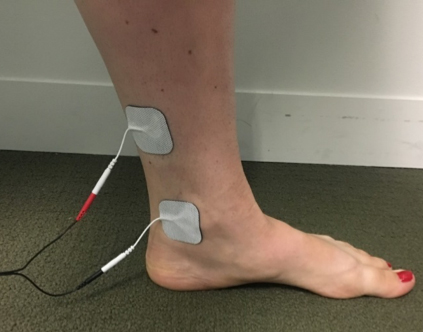New Treatment Option For OAB: TTNS
Key Messages
- Transcutaneous Tibial Nerve Stimulation (TTNS) is a form of neuromodulation, involving stimulation of the posterior tibial nerve via a TENS machine.
- TTNS is cheap, safe and easy to administer.
- New systematic review shows efficacy of TTNS for idiopathic OAB.1
- TTNS can be as effective, or more effective than anti-muscarinics.1
Professor Suzanne Hagen, Scottish pelvic floor research guru, recently delivered a key note address at the 26th National Conference on Incontinence 2017. She discussed Transcutaneous Tibial Nerve Stimulation (TTNS) as a treatment option for overactive bladder (OAB). The research base supporting this treatment technique is growing. A systematic review published this year concluded that TTNS can be an effective, safe intervention for idiopathic OAB, and may also be of benefit to those with neurogenic OAB1.
Posterior Tibial Nerve And OAB
TTNS involves stimulation of the posterior tibial nerve, a sensory-motor nerve originating from L4-S3, which contributes directly to bladder control. Stimulating this nerve is a form of neuromodulation and works by inhibiting reflex bladder contractions. This in turn can increase bladder storage capacity and reduce the sensation of urgency.
The posterior tibial nerve is easily accessible for stimulation as it runs behind the medial malleolus. It can be stimulated in two ways:
- Percutaneous tibial nerve stimulation, requiring needle-tip electrodes which are invasive and expensive.
- Transcutaneous tibial nerve stimulation (TTNS), which requires just a basic TENS (transcutaneous electrical nerve stimulation) machine and standard electrodes. TTNS is much more cost effective than percutaneous tibial nerve stimulation, and much simpler to administer.
Who Can Benefit From TTNS?
This treatment can be used for patients presenting with the OAB symptoms of urinary urgency, urinary frequency / nocturia, with or without urgency incontinence. TTNS will often be used after a failure of standard conservative treatments such as pelvic floor muscle training, behavioural bladder retraining, lifestyle modifications and medication.
How Is It Used?
Two electrodes are placed on the medial ankle overlying the posterior tibial nerve, and specific parameters are set on the TENS machine by a physiotherapist. Patients then use TTNS at home daily for 12 weeks, for 30 minutes each session. Some studies have found efficacy using it only 1-2 times per week, so this is a potential option also. After this time, patients can continue with ‘top-up’ sessions as needed.


 Image: Electrode set-up for TTNS
Image: Electrode set-up for TTNSWhat Are The Side Effects?
TTNS is a relatively safe intervention, with the only contra-indications being pregnancy, cardiac pacemaker, epilepsy, in-dwelling metal in the ankle, and open ankle wounds. Adverse effects are minimal, and can include pain, cramping, electrode site inflammation or itch, and occasionally feeling faint.
Evidence For TTNS
A systematic review published earlier this year found significant improvement in OAB symptoms in 48-93% of participants, and urinary incontinence cure rates of 25-45%1. TTNS was also found to be as effective, or more effective than anti-muscarinics, shown in 4 trials1. Professor Hagen is currently completing a Cochrane Systematic Review in this area, which is due to be published later this year.
TTNS: A Great Treatment Option
TTNS is safe, cheap, dignified, and simple to use. Patients often report good adherence, as minimal set-up and effort is required. It is a great treatment option to have in our tool kits for OAB, especially in those patients wanting to avoid medication.
References
1Booth, J., Connelly, L., Dickson, S., Duncan, F., Lawrence, M. (2018). The effectiveness of transcutaneous tibial nerve stimulation (TTNS) for adults with overactive bladder syndrome: A systematic review. Neurouurology and Urodynamics, 37, 528-541.
June 2018





